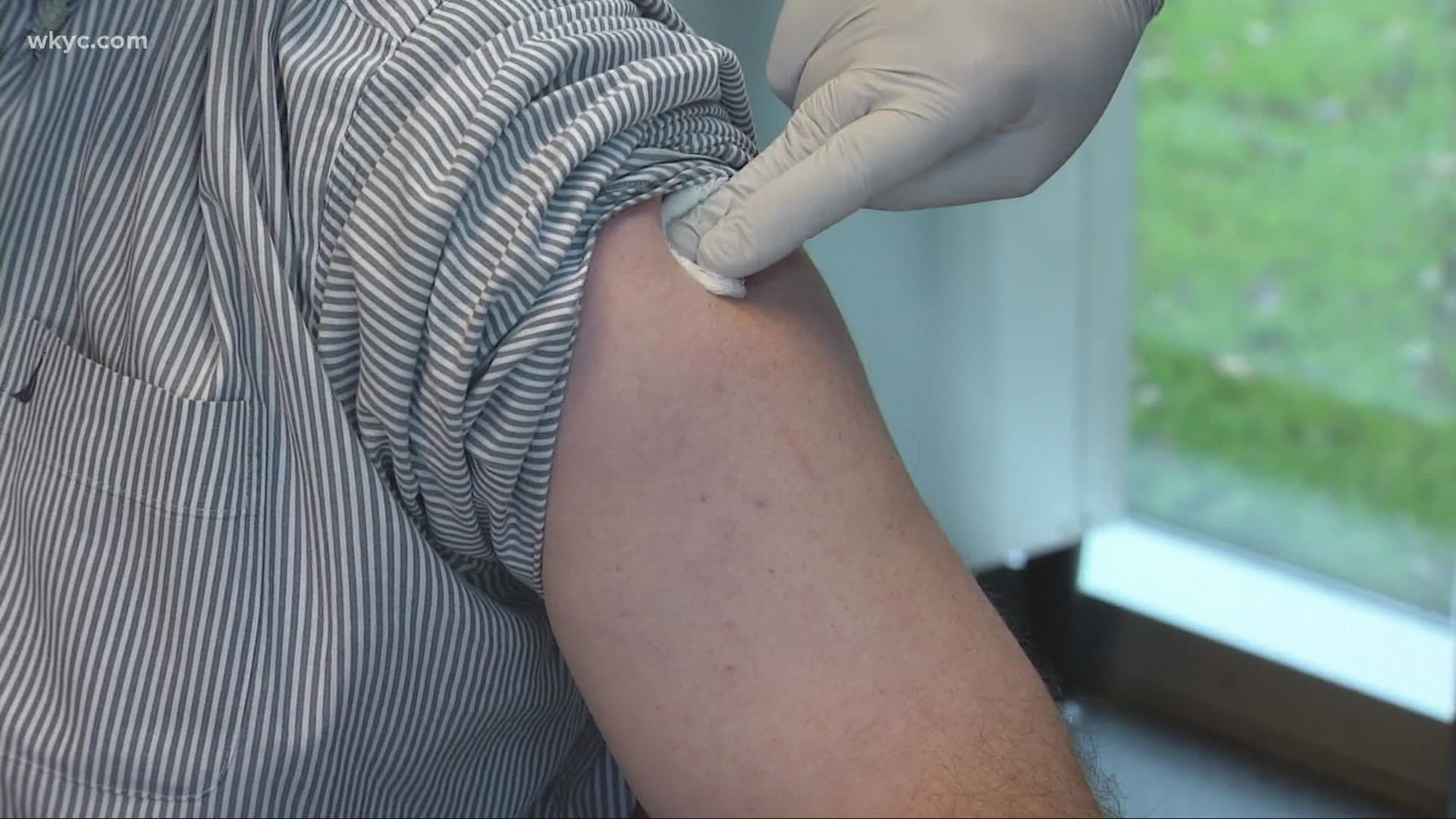CLEVELAND — On Sunday, Pfizer CEO Albert Bourla said that a fourth dose of COVID-19 vaccine is necessary, and that Pfizer is submitting data on the fourth dose to send to the FDA.
He also added that Pfizer is working to develop a vaccine that protects against all variants, including omicron, as well as a vaccine that can provide protection “for at least a year.”
“It is necessary, a fourth booster right now,” he said. “The protection that you are getting from the third, it is good enough, actually quite good for hospitalizations and deaths, it’s not that good against infections.”
However, some local health officials believe that it might be too soon for a fourth dose.
“I think most of us here in the U.S. don’t feel a strong urge to recommend a fourth dose for the general population in light of the current trend in the omicron variant and a lack of understanding about the longevity of the robust response that you get,” said Dr. Amy Edwards, pediatric infectious disease specialist at UH Rainbow Babies & Children’s Hospital.
COVID cases in Northeast Ohio are currently low, with Cuyahoga County Health Commissioner Terry Allan reporting a 2.3% positivity rate.
“Rushing to get everybody a fourth shot right now in spring when numbers all over the country are falling quite dramatically is maybe not what most of us would recommend,” said Dr. Edwards. “And instead I think most of us would recommend waiting and seeing one, what’s the data show, and two, what is COVID going do?”
Allan also recommended waiting for additional data on the fourth dose.
“We need to continue to wait for the science to bear out to make a determination on whether a fourth dose would be necessary, and if so, when, for the general population.”
Currently, the number of people who received their booster dose still lags behind the number who are fully vaccinated.
“If you look at the vaccine numbers, we statewide are about 70% of people over age 12 have started vaccination, which was a statewide milestone," he said. "If we look at that for Cuyahoga, we’re actually doing better - about 77% of people over age 12 have started vaccination, about 72% of those have finished vaccination.”
When it comes to boosters, 55% of the eligible population ages five years old and up have received a booster, said Allan.
“Much like in a lot of other places, the booster rate is significantly behind the vaccination rate,” said Dr. Edwards. “I think now’s the time to kind of make that up.”
Dr. Edwards attributed the dip in booster numbers to hesitancy surrounding vaccines and confusion about who should be getting boosted.
“Some people kind of took a deep breath and went and got the two vaccines even though they didn’t 100% want to. And so, to then turn and be like, ‘oh, and here now you have to get a third one,’ for a lot of those people, that was just a bridge too far. They hadn’t initially really felt enthusiastic about the first two, and to be asked to get a third one, they just weren’t going to do it,” she said. “Some people I think genuinely are still somewhat unaware of whether they’re supposed to or not.”
Dr. Edwards and Allan both emphasized the fact that the vaccines are safe and effective in preventing the worst effects of COVID.
Both experts encouraged people to be proactive and take advantage of the low number of cases by getting boosted or by starting or completing their vaccine series.
“They say to fix the roof when the sun is shining,” said Allan. “It’s a chance for people to consider getting vaccinated if they haven’t now before the prospect of down the road, a potential fall surge. We really don’t know what’s coming, we’ve learned a lot, but we are learning to live with COVID. Getting vaccinated and encouraging those that haven’t to do so is certainly the best approach.”
Previous Reporting:

